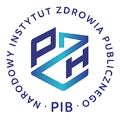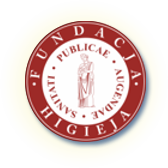Medycyna Doświadczalna i Mikrobiologia 2010, 62(2): 181 - 188
ROZPOZNAWANIE IZOLOWANYCH OD LUDZI NICIENI Z RODZAJU DIROFILARIA PRZY ZASTOSOWANIU TECHNIK BIOLOGII MOLEKULARNEJ
[PROCEDURES FOR SPECIES IDENTIFICATION OF THE NEMATODES BELONGING TO DIROFILARIA GENUS PRESENT IN THE CLINICAL MATERIAL ISOLATED FROM HUMANS]
Streszczenie
Przedstawiono opis procedur zaadaptowanych do izolacji i wykrywania DNA pasożytów z rodzaju Dirofilaria w materiale izolowanym od ludzi i przechowywanym w: etanolu (24 tygodnie), formalinie (46 tygodni) lub zatopionym w bloczkach parafinowych (25 tygodni). Najwyższą czułość PCR obserwowano dla próbek DNA uzyskanych z robaków przechowywanych w etanolu, a najniższą dla próbek pochodzących z materiału przechowywanego w formalinie. Izolacja DNA z pasożyta utrwalonego w formalinie była trudniejsza niż w wypadku pozostałych preparatów, a produkty jego powielania były wykrywalne tylko w Real Time PCR. Uzyskane wyniki pokazują, że metody molekularne są stosunkowo łatwym w użyciu sposobem identyfikacji nicieni z rodzaju Dirofilaria obecnych w materiale klinicznym utrwalonym na różne sposoby. Wskazane jest niestosowanie formaliny do przechowywania materiału, który ma być użyty do diagnostyki opartej o PCR.
Abstract
Procedures for DNA extraction and amplification were modified to allow identification of Dirofilaria
nematodes surgically removed from human tissues. Worm samples stored in: ethanol (24 weeks), formalin (46 weeks) or paraffin blocks (25weeks) were examined. Fragments of two ribosomal DNA regions (5.8S-ITS2-28S, 5SrRNA) and mitochondrial cytochrome oxidase subunit I gene were used as diagnostic markers. The highest PCR sensitivity was observed for DNA obtained from the worm
preserved in ethanol, while the nucleic acid extracted form the parasite stored in formalin yielded the lowest PCR sensitivity. DNA extraction from the parasite preserved in formalin was more time consuming than DNA extraction from the remaining samples. Furthermore, the amplification of DNA isolated from the formaldehyde preserved worm allowed for identification of the parasite species only when the mitochondrial marker was used in Real Time PCR, and the amount of the obtained product
was close to the detection limit. Species identification of the worms stored in the paraffin block and in ethanol was possible with both traditional and Real Time PCR. All analyzed worms were identified as D. repens which confirmed the species identification based on morphological features. The results show that molecular methods are relatively simple to use and suitable for identification of Dirofilaria sp. nematodes present in clinical material. Formalin is not suitable for storing material intended for molecular tests.
Liczba pobrań: 1791




